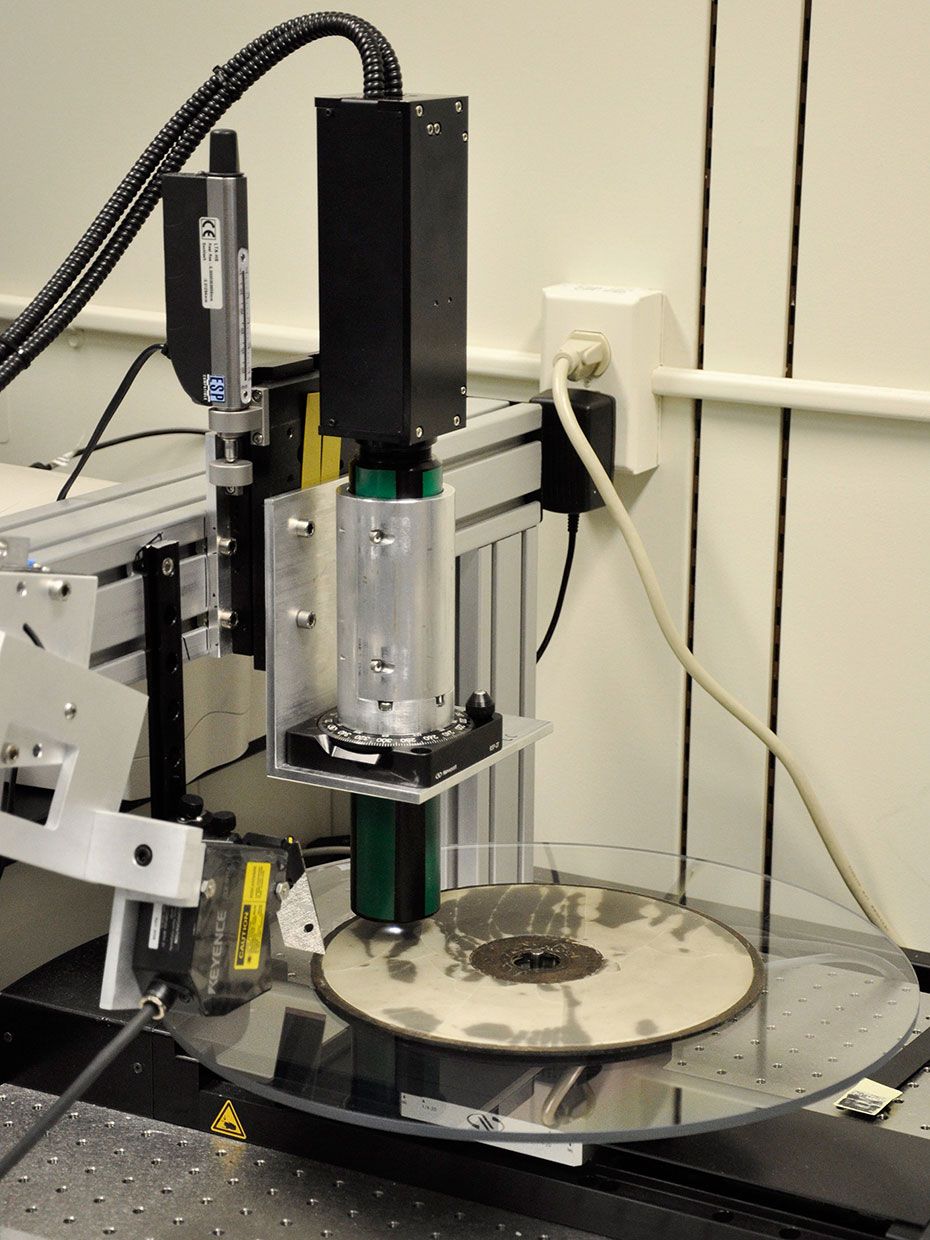Science
Related: About this forumParticle Physics Resurrects Alexander Graham Bell's Voice
Retweeted by LoomingCrisisHat: https://twitter.com/Popehat
As someone who has worked quite a bit on putting data onto discs myself, this is absolutely wild. Alexander Graham Bell’s voice, from 1885.
Link to tweet
30 Apr 2018 | 19:00 GMT
Particle Physics Resurrects Alexander Graham Bell’s Voice
It takes some doing to extract sound from an 1885 wax disc
By Allison Marsh
In 1880, Alexander Graham Bell decided to go head-to-head with Thomas Edison. His goal: improving—and commercializing—the phonograph. Bell established the Volta Laboratory in Washington, D.C., using prize money he’d received from the French government for his invention of the telephone. He hired his cousin, chemist Chichester Bell, and instrument maker Charles Sumner Tainter. Collectively known as the Volta Laboratory Associates, the three men spent the next five years researching the transmission and recording of sound.
Thomas Edison had invented the phonograph in 1877, successfully demonstrating how to record and play back sound. But there were problems. Edison’s machine recorded onto a thin piece of tinfoil wrapped around a cylinder. The foil tore easily, the grooves wore smooth after only a few plays, and the sound quality was poor. In short, nothing about the phonograph was practical. Bell saw an opportunity.
....
Bell knew there was a distinct possibility of a patent fight with Edison, so on three occasions he had papers and experimental products sealed in tin boxes and deposited at the Smithsonian Institution for safekeeping. They were to be opened only with the approval of at least two of the three Volta Associates. Although Bell never used the material as evidence in a legal battle, the Smithsonian collection grew to include hundreds of sound recordings and notebooks from the Volta lab.
....
Most of the Volta recordings at the Smithsonian are one of a kind. They cannot be played, either because the original playback apparatus no longer exists or because to do so would permanently damage the record. For years, curators thought they had lost this sonic cultural heritage forever, and the objects sat mutely in storage. ... Then in 2003, science caught up with the recordings. Vitaliy Fadeyev and Carl Haber of the Lawrence Berkeley National Laboratory published an article in the Journal of the Audio Engineering Society [PDF] describing a method for digitally imaging the grooves of a record and then processing the image to re-create the sound. The two researchers prototyped it on a 1950s copy of “Goodnight Irene” by The Weavers, giving rise to their system’s name, IRENE (for Image, Reconstruct, Erase Noise, Etc.). Then they tested IRENE on a 1920s Edison wax cylinder [PDF], thereby proving that they had developed a noninvasive technique that could recapture sound from early original recordings.


Photos: Division of Work & Industry/National Museum of American History/Smithsonian Institution
A cracked wax-on-fiberboard disc {above} revealed the only known recording of Alexander Graham Bell himself. After several minutes of counting, Bell gives his name, the date (15 April 1885), and location (Volta Laboratory, 1221 Connecticut Avenue, Washington, D.C.) before concluding, “In witness whereof—hear my voice.”
....
An abridged version of this article appears in the May 2018 print issue as “Audio Archaeology.”
Part of a continuing series looking at photographs of historical artifacts that embrace the boundless potential of technology.
About the Author
Allison Marsh is an associate professor of history at the University of South Carolina and codirector of the Ann Johnson Institute for Science, Technology & Society there.
PoliticAverse
(26,366 posts)lapfog_1
(29,198 posts)including the time that I worked at NASA and was given stacks of 7 track 800 BPI planetary probe raw data to restore from the Marnier missions of the 1970s. I found most of it from other NASA sites (JPL!) but a few tapes I had to get iron dust and a clean room and a bunch of people to sprinkle the dust on the tape and (with a magnifying glass) read the "bits". Running the tape through a tape reader would had simply scraped the iron oxide off the Mylar tape.
But this restoration takes the cake!
Congrats to the Smithsonian!
hunter
(38,309 posts)I'll bet that's how he talked on the telephone too.
Victor_c3
(3,557 posts)SCantiGOP
(13,868 posts)You have won a $7,500 luxury cruise in the Caribbean...........................
Victor_c3
(3,557 posts)They always want your social security number, birthday, and credit numbers when they answer that way.
“Ahoy-hoy” is much simpler. Much less follow up conversation....